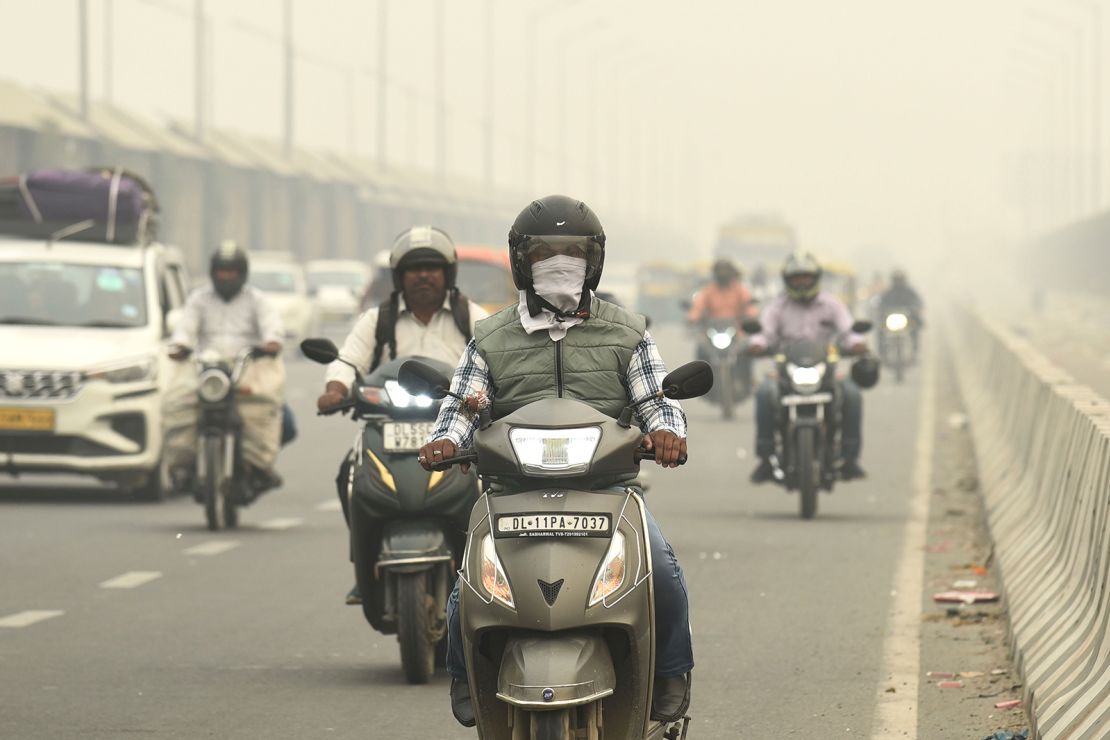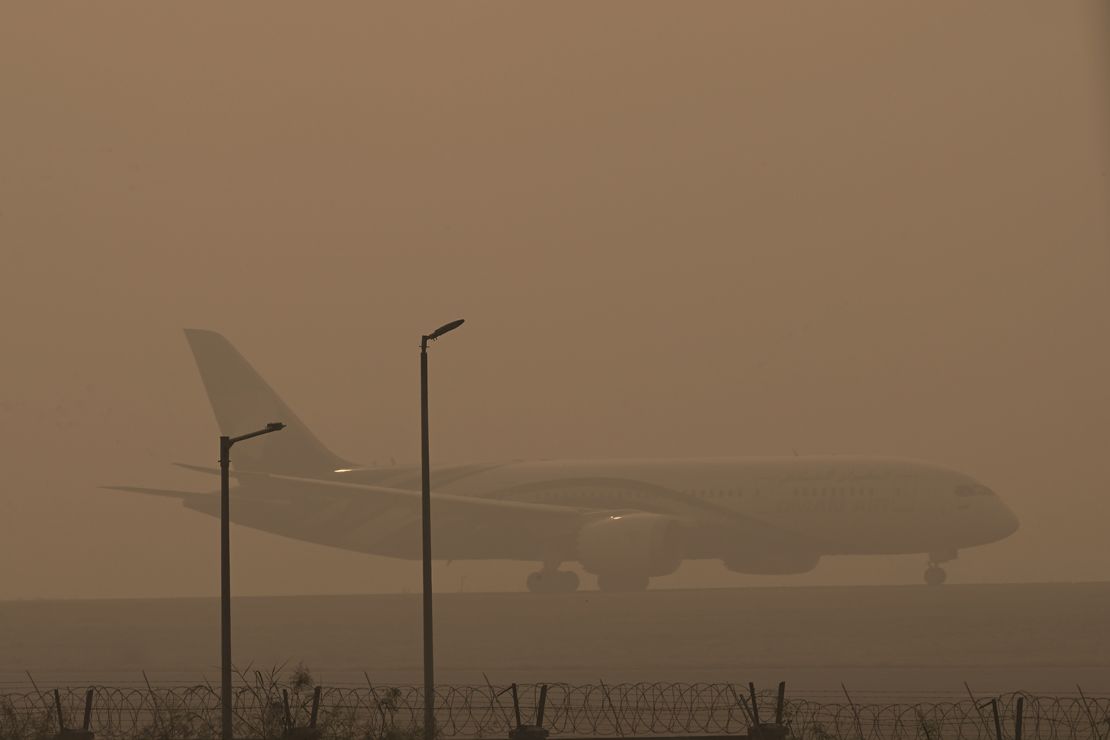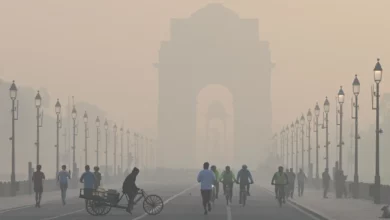
A throat-searing blanket of smog has enveloped New Delhi, forcing schools to shut and disrupting the Cricket World Cup as officials rush to contain a pollution crisis that has become an annual occurrence in the Indian capital.
“Sadly, every year when November rolls around there a sense of dread as the air turns foul,” said resident Prachi Bhuchar. “We have been in Delhi for over 15 years now, but each year makes it tougher to stay on because it is a living hell.”
The city’s air quality declined last week after colder temperatures trapped particles from surrounding crop burning, creating a toxic haze that reached hazardous levels for the fourth consecutive day on Monday.
New Delhi started the week with a PM 2.5 concentration nearly 80 times the World Health Organization’s recommended limit, according to Swiss air quality company IQAir.
PM 2.5 particles include pollutants such as sulfate, nitrates and black carbon, and exposure to them can impair cognitive and immune functions with links to lung and heart disorders.

The pollution has threatened the ongoing Cricket World Cup after Sri Lanka was forced to cancel their training session over the weekend as the men gear up to play Bangladesh at the capital’s Arun Jaitley Stadium on Monday.
To ease conditions, India’s cricket board last week announced a ban on firework displays for the remaining matches of the tournament.
Authorities are scrambling to relieve the city of its smog, implementing emergency measures including halting non-essential truck movement and construction work. People are wearing face masks and trucks have been sprinkling water on the roads to reduce dust levels in the city.
Worried residents are also rushing to buy air purifiers, local media reported, after doctors advised residents to remain indoors to avoid exposure to the toxic fumes.
Awesta Chaudhary said it is “very scary” that her nearly three-year-old son is growing up in “such toxic conditions.”
“I have noticed that even if you have a small opening in the window or anywhere, the smog is just making it inside your house. I am not taking (my son) out to the parks. We try to limit him indoors as much as possible because we are very scared to expose him,” she said
“I believe the government can do much more than what they are already doing, and more strict regulations need to be made to curtail the levels of pollution,” said Chaudhary, who said she has been running her air purifier for more than 72 hours straight.
Nobody spared
India has long struggled with its smog problem, which ranges from choked urban centers with high amounts of vehicular pollution and industrial waste, to agricultural areas that suffer from pollution caused by crop burning – a practice of burning cultivated fields to prepare land for the next crop.
New Delhi, home to more than 20 million people, is often ranked among the world’s most polluted cities and research shows residents’ health is suffering.
According to a 2021 study by the Energy Policy Institute at the University of Chicago (EPIC), bad air could reduce the life expectancy of Delhi residents by as much as nine years.
The study also found that every single one of India’s 1.4 billion residents endure annual average pollution levels that exceed guidelines set by WHO.

In 2019, the central government announced a national clean air campaign, with an aim to reduce particulate pollution by up to 30% by 2024.
Specific plans were created for each city; in Delhi, those plans included measures to reduce road traffic, burn-offs and road dust, and to encourage the use of cleaner fuels.
But in the past few years, India’s pollution problem has worsened, partly due to the country’s dependency on fossil fuels.
Doctors say they have seen an increase in pollution-related illness, with patients complaining of cough, throat irritation, shortness of breath and skin problems, among others.
“Sicknesses from pollution are getting worse over the years because of prolonged exposure and worsening levels,” Dr. Suranjit Chatterjee, senior consultant of Internal Medicine at New Delhi’s Indraprastha Apollo Hospital told CNN on Monday.
“High pollution level spares nobody but the most vulnerable population are people with lung diseases like asthma, bronchitis and lung damage.”
CNN’s Vedika Sud and Sania Farooqui contributed reporting from New Delhi.



